Browsing News Entries
Pope Leo XIV mourns for victims of fire in Swiss bar on New Year’s Eve
Posted on 01/2/2026 23:07 PM (CNA Daily News - Europe)
 Pope Leo XIV. | Credit: Vatican Media
Pope Leo XIV. | Credit: Vatican Media
Jan 2, 2026 / 18:07 pm (CNA).
Pope Leo XIV expressed his closeness and compassion to the families of the victims of a fire that broke out in the early hours of Jan. 1 at a bar in the ski resort of Crans-Montana in Switzerland.
Nearly 300 people were celebrating New Year’s Eve at the Le Constellation bar when the fire spread rapidly from the basement to the upper part of the establishment, causing a subsequent explosion that left at least 40 people dead and 115 injured.
The causes of the tragic incident are still unknown, although authorities believe it was an accident.
In a telegram expressing condolences addressed to Bishop Jean-Marie Lovey of Sion and signed by Vatican Secretary of State Cardinal Pietro Parolin, the Holy Father joined in mourning with the grieving families and all of Switzerland.
The pontiff also prayed to the Lord to “welcome the deceased into his dwelling place of peace and light, and to sustain the courage of those who are suffering in their hearts or bodies.”
“May the Mother of God, in her tenderness, bring the consolation of faith to all those affected by this tragedy and keep them in hope,” the telegram states.
This story was first published by ACI Prensa, CNA’s Spanish-language news partner. It has been translated and adapted by CNA.
Pope Leo XIV mourns for victims of fire in Swiss bar on New Year’s Eve
Posted on 01/2/2026 23:07 PM (CNA Daily News - Europe)
 Pope Leo XIV. | Credit: Vatican Media
Pope Leo XIV. | Credit: Vatican Media
Jan 2, 2026 / 18:07 pm (CNA).
Pope Leo XIV expressed his closeness and compassion to the families of the victims of a fire that broke out in the early hours of Jan. 1 at a bar in the ski resort of Crans-Montana in Switzerland.
Nearly 300 people were celebrating New Year’s Eve at the Le Constellation bar when the fire spread rapidly from the basement to the upper part of the establishment, causing a subsequent explosion that left at least 40 people dead and 115 injured.
The causes of the tragic incident are still unknown, although authorities believe it was an accident.
In a telegram expressing condolences addressed to Bishop Jean-Marie Lovey of Sion and signed by Vatican Secretary of State Cardinal Pietro Parolin, the Holy Father joined in mourning with the grieving families and all of Switzerland.
The pontiff also prayed to the Lord to “welcome the deceased into his dwelling place of peace and light, and to sustain the courage of those who are suffering in their hearts or bodies.”
“May the Mother of God, in her tenderness, bring the consolation of faith to all those affected by this tragedy and keep them in hope,” the telegram states.
This story was first published by ACI Prensa, CNA’s Spanish-language news partner. It has been translated and adapted by CNA.
Tabernacle forced open, Blessed Sacrament stolen from monastery in Spain
Posted on 01/2/2026 22:00 PM (CNA Daily News - Europe)
 The tabernacle of Holy Thorn Monastery church in Valladolid, Spain, was forced open and the Blessed Sacrament was stolen. | Credit: Creative Commons/Nicolás Pérez
The tabernacle of Holy Thorn Monastery church in Valladolid, Spain, was forced open and the Blessed Sacrament was stolen. | Credit: Creative Commons/Nicolás Pérez
Jan 2, 2026 / 17:00 pm (CNA).
The tabernacle of Holy Thorn Monastery church in Valladolid, Spain, was forced open and the Blessed Sacrament was stolen.
The Cistercian monastery, which was founded in 1147, preserves a relic of Christ’s crown of thorns.
The monastery’s parish priest, Father Francisco Casas, filed a complaint with the Civil Guard on Dec. 28, 2025, after informing the archbishop of Valladolid and president of the Spanish Bishops’ Conference, Luis Argüello, of what had happened earlier that day.
In March 2025, this same act of desecration was committed in Our Lady of the Meadow church in the town Arroyo de la Encomienda on the outskirts of Valladolid.
According to the Holy Thorn Monastery’s website, the perpetrators did not touch anything else, so “their target was the Lord.”
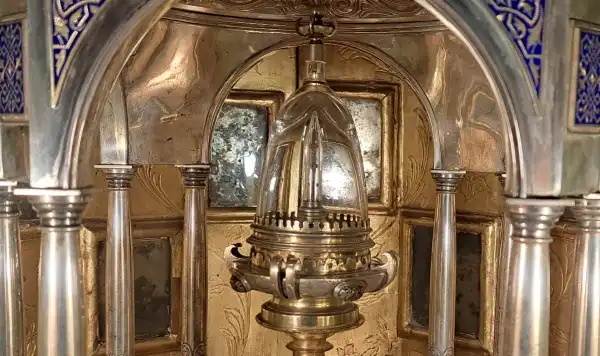
Act of reparation
In response to this “offense of exceptional gravity,” Argüello will perform an act of reparation at 6 p.m. local time on Jan. 3 at the monastery.
The act of reparation will be carried out “for the harm caused to the Most Holy Sacrament of the Eucharist, the real presence of Jesus Christ in the bread and wine, transformed into his body and blood after the consecration,” the Archdiocese of Valladolid stated on its website.
After lamenting that this is the second desecration in an area church in just nine months, the archdiocese urged the faithful “to pray in reparation for this sacrilegious act, as well as to safeguard the celebration of the Eucharist and the reservation of the Blessed Sacrament in the tabernacle.”
The monastery is asking Catholics “not to remain indifferent” to such a grave offense and to join in the act of reparation — either at the monastery or individually — to spend this time with the outraged Lord and give public witness to their faith.
This story was first published by ACI Prensa, CNA’s Spanish-language news partner. It has been translated and adapted by CNA.
Dublin archbishop challenges politicians to show leadership in promoting peace
Posted on 01/2/2026 17:58 PM (CNA Daily News - Europe)
 In his New Year's Day homily at Newtownpark Avenue Church in Dublin, Archbishop Dermot Farrell called upon Ireland’s politicians to show leadership in promoting peace and in how they communicate and articulate it. Credit: John McElroy
In his New Year's Day homily at Newtownpark Avenue Church in Dublin, Archbishop Dermot Farrell called upon Ireland’s politicians to show leadership in promoting peace and in how they communicate and articulate it. Credit: John McElroy
Jan 2, 2026 / 12:58 pm (CNA).
In his New Year’s Day homily at Newtownpark Avenue Church in Dublin, Archbishop Dermot Farrell called upon Ireland’s politicians to show leadership in promoting peace and in how they communicate and articulate it.
The archbishop was speaking at a Mass for the World Day of Peace where apostolic nuncio Archbishop Luis Mariano Montemayor and Archbishop Emeritus Diarmuid Martin were among the concelebrants.
His appeal comes at a time when Ireland’s traditional neutrality has come under scrutiny and as the country prepares to take over the EU presidency in the second half of 2026, where defense will be high on the agenda. The presidency of the Council of the European Union is a role that rotates among the EU member states every six months. Fifty European leaders are due to visit Ireland during its presidency.
“Yes, leaders are important; indeed, good leadership is vital. However, we need to take to heart that good leaders bring people with them,” Farrell said.
Speaking before a congregation that included government ministers and representatives of the Irish Defence Forces, Farrell quoted the late Nobel Prize winner John Hume.
“Many here this morning will remember the conviction and witness of the late John Hume. For John Hume, ‘political leadership [was] like being a teacher. It’s about changing the language of others,’ he said. ‘I say it and go on saying it until I hear the man in the pub saying my words back to me.’”
The archbishop continued: “Ireland has a proud record in international work for peace. Now, in our days, there is a need and opportunity for the Irish state to articulate how this tradition and the values which underpin it will be continued in a rapidly changing international situation.”
Farrell said there is a need as well as an opportunity for Ireland to articulate how this peace tradition and the values that underpin it can continue today.
“It is not enough to invest in defense capacity or to point to how the circumstances of our traditional military neutrality have changed,” he said. “Ireland’s commitment to promoting a sustainable peace needs a new articulation. We are not in an either-or situation. It is not them or us. When we invest in peace everybody wins.”
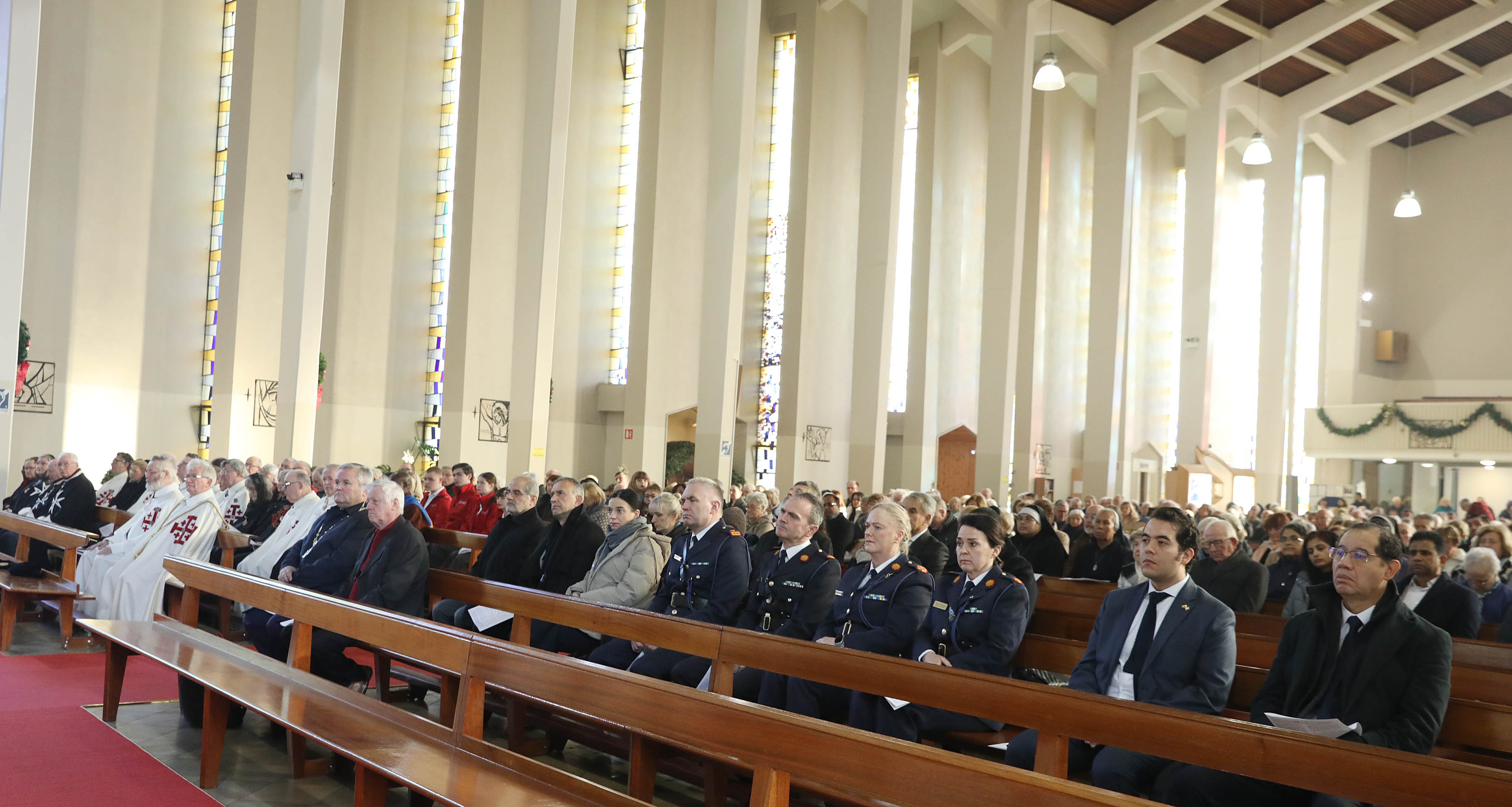
The Taoiseach Micheál Martin and Tánaiste Simon Harris have made repeated statements on Ireland’s neutrality, but that has not prevented them from making the state’s views known on international conflicts.
On Ukraine and Gaza, for example, Ireland has taken a decisive political stance, which has aroused the ire of the Russian and Israeli governments.
Writing in the London’s Daily Telegraph, Barry O’Halloran voiced an opinion shared by some in the U.K. and Europe that Ireland needs to invest to defend itself irrespective of its neutrality: “Irish neutrality is a legacy of Éamon de Valera’s considerable antipathy to all things British and has been the lodestar of Irish foreign policy since the state was founded.”
The Irish state relies on the British Royal Navy to protect Irish coastal waters, and the country’s geographical position at the periphery of Europe makes it strategically of interest to Russia.
Russian submarines have been mapping the transatlantic cables in Irish waters, which carry about 75% of the data traveling between Europe and the United States.
“After decades of underfunding, the Irish Defence Forces have no idea what is going on in the seas around Ireland. The navy doesn’t have the ships, the personnel, or even the electronic equipment to monitor hostile activity in our waters,” Stephen Collins wrote in the Irish Times.
Martin has acknowledged concerns about economic security in terms of gas connectors and subsea cables and dismissed a statement by Maria Zakharova, a spokesperson for Russia’s Ministry of Foreign Affairs, that the European Union and Ukraine were attempting to interfere with Ireland’s neutral status.
In his homily on New Year’s Day, Farrell was unequivocal that governments clearly have a critical role to play in shaping the course of international events and the onerous responsibility of pursuing the path of peace even in the face of provocation.
“Enduring peace is born of compassion and respect; it is born of patience, of attention to the other, of the conviction that the one who presents themselves as different, as other, is actually like oneself, is a true sister or brother of mine. This is what our faith means when we say that peace is born of hope.”
Historic Dutch former Catholic church destroyed by fire on New Year’s Day
Posted on 01/2/2026 17:10 PM (CNA Daily News - Europe)
 A fire tears through the Vondelkerk church tower in Amsterdam on New Year’s Day, Jan. 1, 2026. | Credit: Remko DE WAAL/ANP/AFP via Getty Images/Netherlands OUT
A fire tears through the Vondelkerk church tower in Amsterdam on New Year’s Day, Jan. 1, 2026. | Credit: Remko DE WAAL/ANP/AFP via Getty Images/Netherlands OUT
Jan 2, 2026 / 12:10 pm (CNA).
A Jan. 1 fire destroyed a historic Dutch former Catholic church building in Amsterdam, reducing the famed 150-year-old building mostly to ash in a matter of hours.
Firefighters reportedly responded to a fire at the Vondelkerk, or Vondel Church, around 1 a.m. on New Year’s Day, with the blaze ultimately consuming nearly all of the building and mostly leaving burned walls behind.
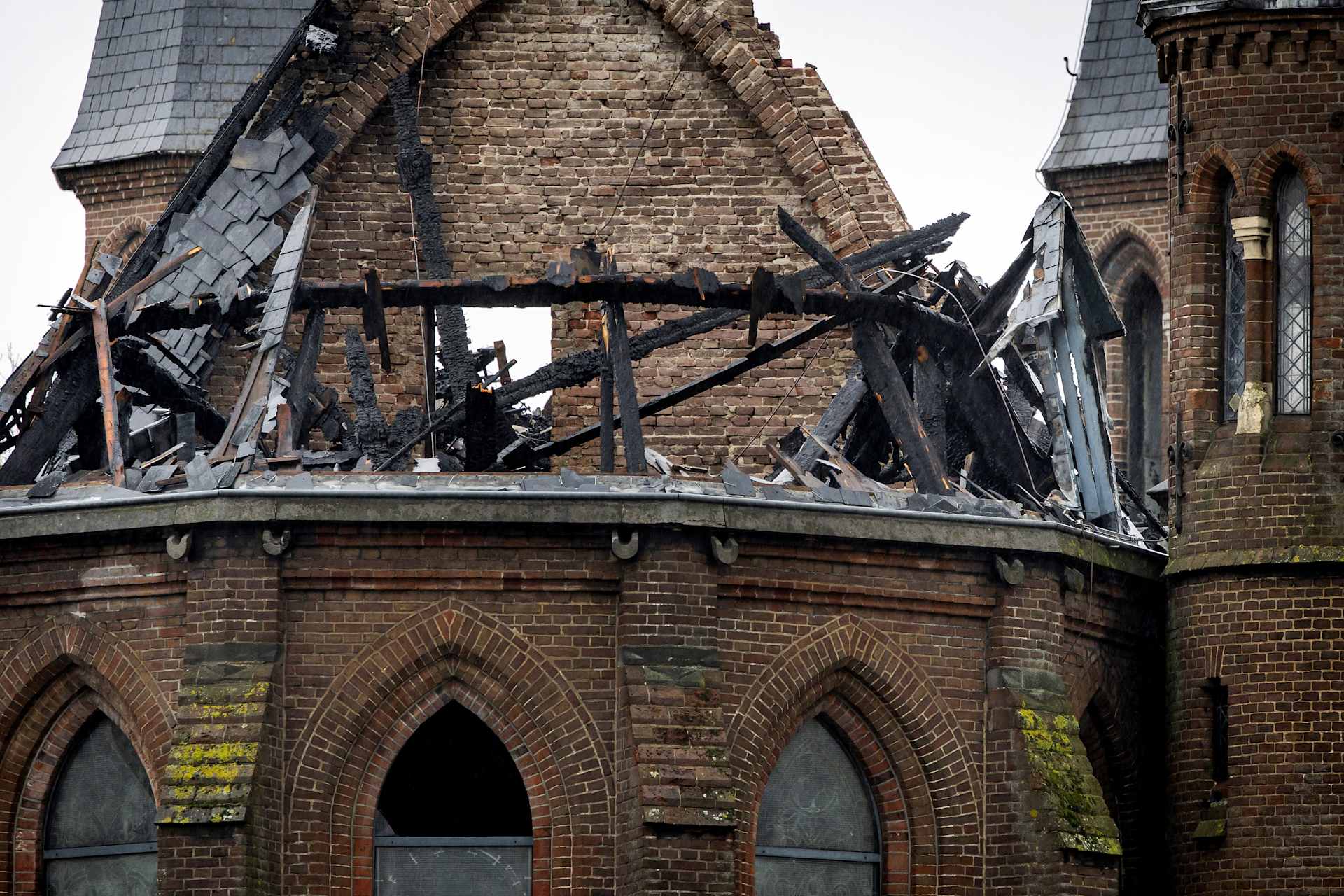
The historic church was built in 1880 by Pierre Cuypers, a famed Dutch architect known for designing dozens of churches in the Netherlands. Formerly of the Diocese of Haarlem-Amsterdam, the building was sold in 1979 and deconsecrated, a formal act by the Church to remove the sacred character of the church so it is no longer considered a dedicated sacred space for divine worship. After a century of use as a sacred space, the building was eventually renovated for use as an event venue.
The property owner Stadsherstel Amsterdam (“Urban Restoration Amsterdam”) said in a statement that the fire caused the church’s tower to fall into the nave. Photos show the building completely gutted as of Jan. 2.
“The loss of this beautiful church touches us all,” the restoration group said. “Our thoughts go out to the local residents, the regular tenants of the church who have lost their workplace, and to the people who had booked the Vondelkerk for their wedding, company party, concert, or other special moments.”
“We are doing everything we can to see what we can do for them in the coming days,” the group said. The organization added it was launching a crowdfunding campaign to help restore the building.
It was not immediately clear what started the fire. No deaths or injuries were reported.
The news comes shortly after a deadly fire in Switzerland killed dozens at a ski resort in Crans-Montana.
Pope Leo XIV expressed mourning over the Swiss fire in a telegram to Sion Bishop Jean-Marie Lovey, offering prayers “to the Lord to welcome the deceased into his dwelling of peace and light, and to support the courage of those who suffer in their hearts or in their bodies.”
Thousands of young Europeans are beginning the new year at ecumenical gathering
Posted on 12/31/2025 16:58 PM (CNA Daily News - Europe)
 Afternoon prayers for the ecumenical youth gathering are taking place in the Accor Arena, which can accommodate more than 20,000 people. Credit: Taizé Community
Afternoon prayers for the ecumenical youth gathering are taking place in the Accor Arena, which can accommodate more than 20,000 people. Credit: Taizé Community
Dec 31, 2025 / 11:58 am (CNA).
Thousands of young Catholics and other fellow Christians from various traditions are in Paris this week ushering out 2025 and ushering in 2026 as part of an ecumenical gathering organized by the Taizé Community.
The city of Paris and the entire Île-de-France region are the setting for the 48th European Meeting, a pilgrimage from Dec. 28, 2025, to Jan. 1, 2026, in which 15,000 young people ages 18–35 are participating, including 1,000 Ukrainians.
The event includes the participation of nearly 60 brothers out of the 80 who make up the Taizé Ecumenical Community, founded in 1940 with the mission of “being a sign of unity in the Church and in the human family.”
The program includes communal prayer in the large churches of Paris, various local initiatives, testimonies of hope, and workshops. The afternoon prayers take place in the Accor Arena, which can accommodate more than 20,000 people.
Numerous families in Paris and the Île-de-France region have generously welcomed the young people into their homes while various parishes, schools, and sports centers have also made their facilities available.
For Brother Mathew Thorpe, current prior of the community, this event is a call “to break free from our algorithms and experience mutual listening, an opening of the heart to welcome others as they are,” he told the French newspaper La Croix.
He also noted that this year’s gathering includes a psychological support center located in the Notre-Dame de l’Arche d’Alliance (Our Lady Ark of the Covenant) church to provide assistance to young people who have been victims of abuse.
The Taizé brother emphasized that this encounter also offers “a space for young people to listen to Christ in the depths of their being” and expressed his hope that it would help them “go forward in their journey with Christ.”
“The important thing is that they receive something that inspires them to become pilgrims of peace and hope, wherever they are, in their local church, in their places of commitment, to help others eliminate the barriers that divide our society,” he said.
From Spain, 22-year-old Pedro del Río Granado arrived in Paris with other youth from the Archdiocese of Madrid. For this student, the Taizé European Meeting “is a very important experience” and an opportunity to begin the year with God.
Brother Alois, who succeeded Brother Roger, the founding prior of Taizé, said on behalf of the community that this experience “helps us understand the Gospel.”
“We Christians can show that there is something that unites us in Europe, something that keeps us together,” he emphasized.
A few days before the meeting began, Eastern Orthodox Ecumenical Patriarch Bartholomew I of Constantinople in a message addressed to young people reminded them that “the world needs your clear vision, your courage, and your capacity for hope.”
“It needs young peace builders, capable of resisting violence, exclusion, and contempt for others. It needs witnesses of a humble faith, understood not as power but as service,” he said.
This story was first published by ACI Prensa, CNA’s Spanish-language news partner. It has been translated and adapted by CNA.
Bosnian Muslims murdered his family, but later as a priest he forgave them
Posted on 12/31/2025 15:50 PM (CNA Daily News - Europe)
 “When I began hearing the confessions of the faithful, I understood that there can be no inner peace without forgiveness," said Father Pero Miličević.| Credit: Vatican Media
“When I began hearing the confessions of the faithful, I understood that there can be no inner peace without forgiveness," said Father Pero Miličević.| Credit: Vatican Media
Dec 31, 2025 / 10:50 am (CNA).
Father Pero Miličević witnessed the cruelest face of war when he was just a child. On July 28, 1993, a group of Muslim militiamen from the Bosnia and Herzegovina army stormed his native village, Dlkani, in the Jablanica district. In just one morning, 39 people were killed, including his father and several members of his family.
“It was the experience of the darkness and evil of war,” he summarized to journalists at the Holy See Press Office during the recent presentation for the pope’s message for the 2026 World Day of Peace, which will be celebrated on Jan. 1.
Thirty-two years after that day of terror, that boy, who instantly lost his innocence, speaks today with the serenity of a priest. Miličević was only 7 years old when the gunfire shattered his childhood. He was playing with his twin brother and another of his older brothers when the bursts of gunfire began. “The bullets flew over our heads,” he recalled.
His mother and sister pulled them inside the house to safety. His father, Andrija, wasn’t there. He had gone out to the fields to help an aunt, but he was also murdered. He was 45 years old. Miličević’s mother, Ruža, was left a widow with nine children, seven of them minors.
That same day, two of his mother’s sisters and several cousins were also murdered. “When one person dies, it’s already terrible; when three children die, as happened to my aunt, I don’t know how a mother’s heart doesn’t break,” the priest confessed, his voice trembling.
7 months held in a prison camp
The devastation of that July 28 did not end with the massacre. His mother and siblings were deported to a prison camp known as the “Museum” in Jablanica, along with about 300 Croatian Catholics. They remained there for seven months.
The conditions were extreme. “We didn’t have enough food, there was no hygiene, and we slept on cold granite slabs,” he recounted. Death was a part of daily life, but, he explained, the physical pain and hunger were not comparable to the anguish of not knowing what would become of them.
‘We would never have survived without faith’
What sustained them was a simple faith, inherited from their mother: the daily recitation of the rosary. “We would never have survived without faith, prayer, and the need for peace,” he related.
During that imprisonment, the temptation for revenge was constant. However, Miličević said he left the camp with a firm conviction: “We had to maintain peace in our hearts and not think about revenge.”
When they were finally released, another devastating blow came. His father’s body had remained exposed to the elements for seven months without being interred. Only then were they able to lay him to rest. “His body had been left unburied; what we buried were his bones,” he explained.
Miličević is often asked how he was able to endure so much suffering. His answer hasn’t changed over the years: faith. “That upbringing in God nourished us and helped us get through horrors that no child should ever see,” he said.
Forgiveness, however, was a process. He couldn’t find it in his heart to forgive right away. Miličević readily admitted that at first, he was consumed by rage. For years, it remained an open wound. However, the true turning point came when he decided to become a priest. He was ordained in 2012.
‘There can be no inner peace without forgiveness’
“When I began hearing the confessions of the faithful, I understood that there can be no inner peace without forgiveness and that it was necessary to deal with what I went through,” he explained. Only then did the wound begin to heal.
In 2013, 20 years after his captivity, he returned to the former prison camp. “I returned in tears,” he recounted. It wasn’t about settling scores but a decisive step toward inner liberation.
Today, his story embodies the message that Pope Leo XIV is proposing for the Jan. 1 World Day of Peace. “Peace must be lived, cultivated, and protected,” the priest emphasized, adding: “Evil is overcome with good, not with revenge or weapons.” Quoting the pontiff, he recalled that “goodness is disarming.”
This story was first published by ACI Prensa, CNA’s Spanish-language news partner. It has been translated and adapted by CNA.
Pope Leo XIV: To let God work in your life, you have to empty yourself
Posted on 12/29/2025 19:48 PM (CNA Daily News - Europe)
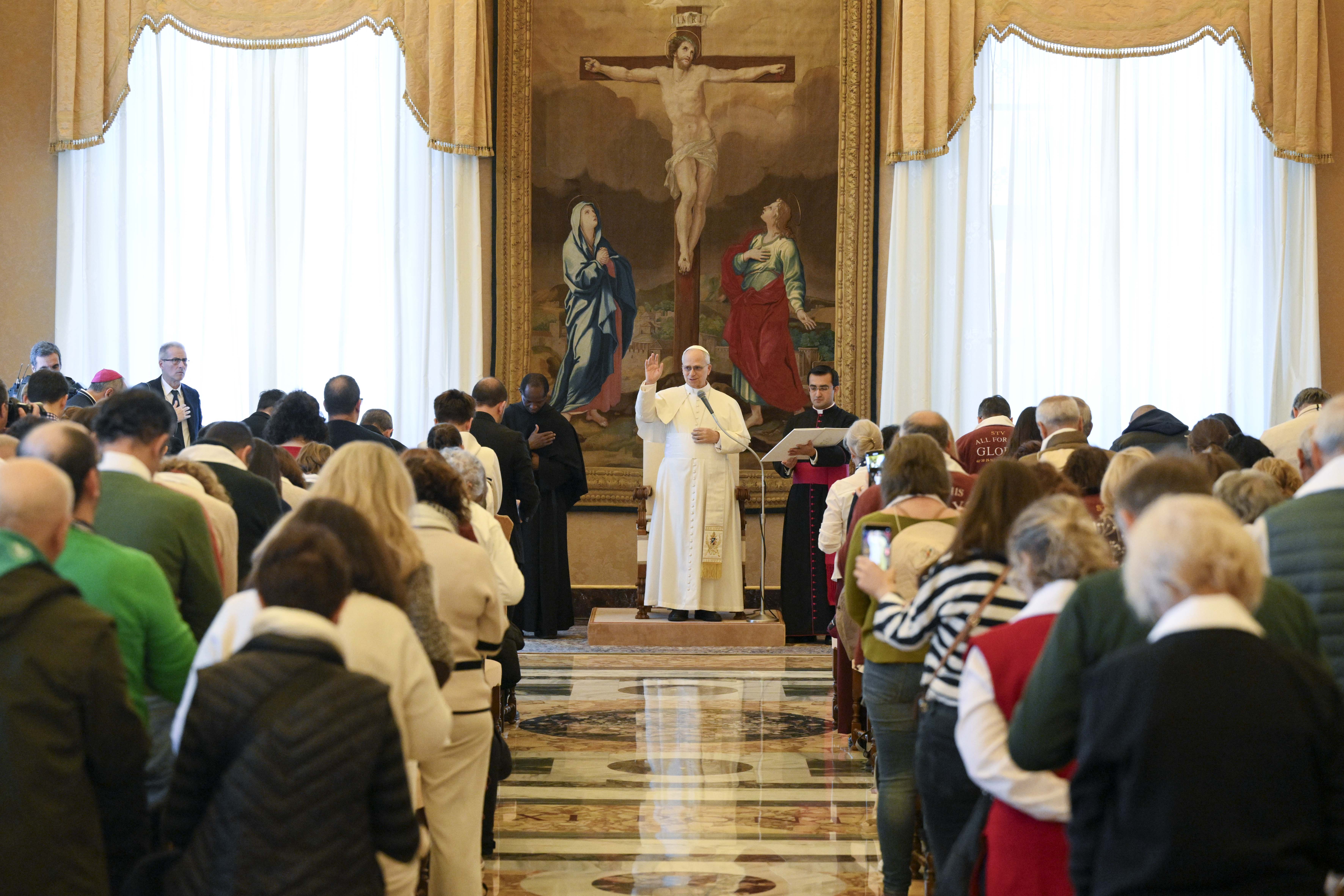 Pope Leo XIV meets with a group of pilgrims from St. Thomas of Villanova Parish in Alcalá de Henares, Spain, on Dec. 29, 2025, in the Apostolic Palace at the Vatican. | Credit: Vatican Media
Pope Leo XIV meets with a group of pilgrims from St. Thomas of Villanova Parish in Alcalá de Henares, Spain, on Dec. 29, 2025, in the Apostolic Palace at the Vatican. | Credit: Vatican Media
Dec 29, 2025 / 14:48 pm (CNA).
Pope Leo XIV on Monday explained that in order to allow God’s action in our personal lives, people must “empty” themselves and cultivate a deep inner life.
The pontiff made the observation during a Dec. 29 audience at the Apostolic Palace with a group of pilgrims from St. Thomas of Villanova Parish in Alcalá de Henares, Spain.
The event took place in the context of the Jubilee Year of Hope, which the Holy Father described as “a particularly significant time for the Church.” Leo XIV thanked the pilgrims for their spiritual closeness and support for the successor of Peter “with their prayers and generosity,” emphasizing that this is “a gesture of communion and closeness.”
In his greeting, the pope recalled the figure of St. Thomas of Villanova, an Augustinian Spanish bishop and the patron saint of the pilgrims’ parish, highlighting that he was a man “open to God’s action in his life.”
“That openness led him to do much good,” Pope Leo said.
The pontiff invited the faithful to be inspired by some of the distinctive traits of the Spanish saint, beginning with his intense spiritual life.
Recognize talents, put them at service of community
“In his life and in his writings, he reveals to us an unceasing search for continuous prayer; that is, a holy restlessness to be in God’s presence at every moment,” he said. This attitude involves profound interiority, emptying yourself to listen to and allow the Lord to work.”
Leo XIV also highlighted the saint’s “sobriety and simplicity” as well as “his selfless labor,” especially in the university setting, and his “apostolic zeal.” The pope emphasized that all these attitudes lead us to believe that “we must recognize the talents we have received and put them at the service of the community, with effort and dedication, so that they may multiply for the benefit of all,” especially in a world that “seems to offer us everything more and more quickly and easily.”
He also highlighted the simplicity of St. Thomas of Villanova (1486–1555), historically known as the “Archbishop of the Poor” or the “Almsgiver of God” because of his immense charity. “I would like to emphasize his love for the poor,” he said.
Referring to the parish life of the pilgrims, Leo XIV expressed his gratitude for their concrete sensitivity toward those most in need, reminding them that “the poor are not only someone to be helped but the sacramental presence of the Lord.”
This story was first published by ACI Prensa, CNA’s Spanish-language news partner. It has been translated and adapted by CNA.
Northern Ireland’s only Catholic college celebrates 125 years of training teachers
Posted on 12/29/2025 09:00 AM (CNA Daily News - Europe)
 Graduates pose with their degrees at St. Mary’s University College in Belfast, Northern Ireland. | Credit: St. Mary’s University College
Graduates pose with their degrees at St. Mary’s University College in Belfast, Northern Ireland. | Credit: St. Mary’s University College
EWTN News, Dec 29, 2025 / 04:00 am (CNA).
Four generations of teachers, a Nobel Prize winner, and a kicker with the New Orleans Saints are among those who have graduated from Northern Ireland’s only Catholic higher education institution.
St. Mary’s University College in Belfast is marking the 125th year of a remarkable journey that began in 1900.
Since its foundation, St. Mary’s has been synonymous with training Catholic teachers. It is rooted in a profound commitment to Catholic education, with its alumni teaching in every Catholic school in Northern Ireland and in schools around the world.
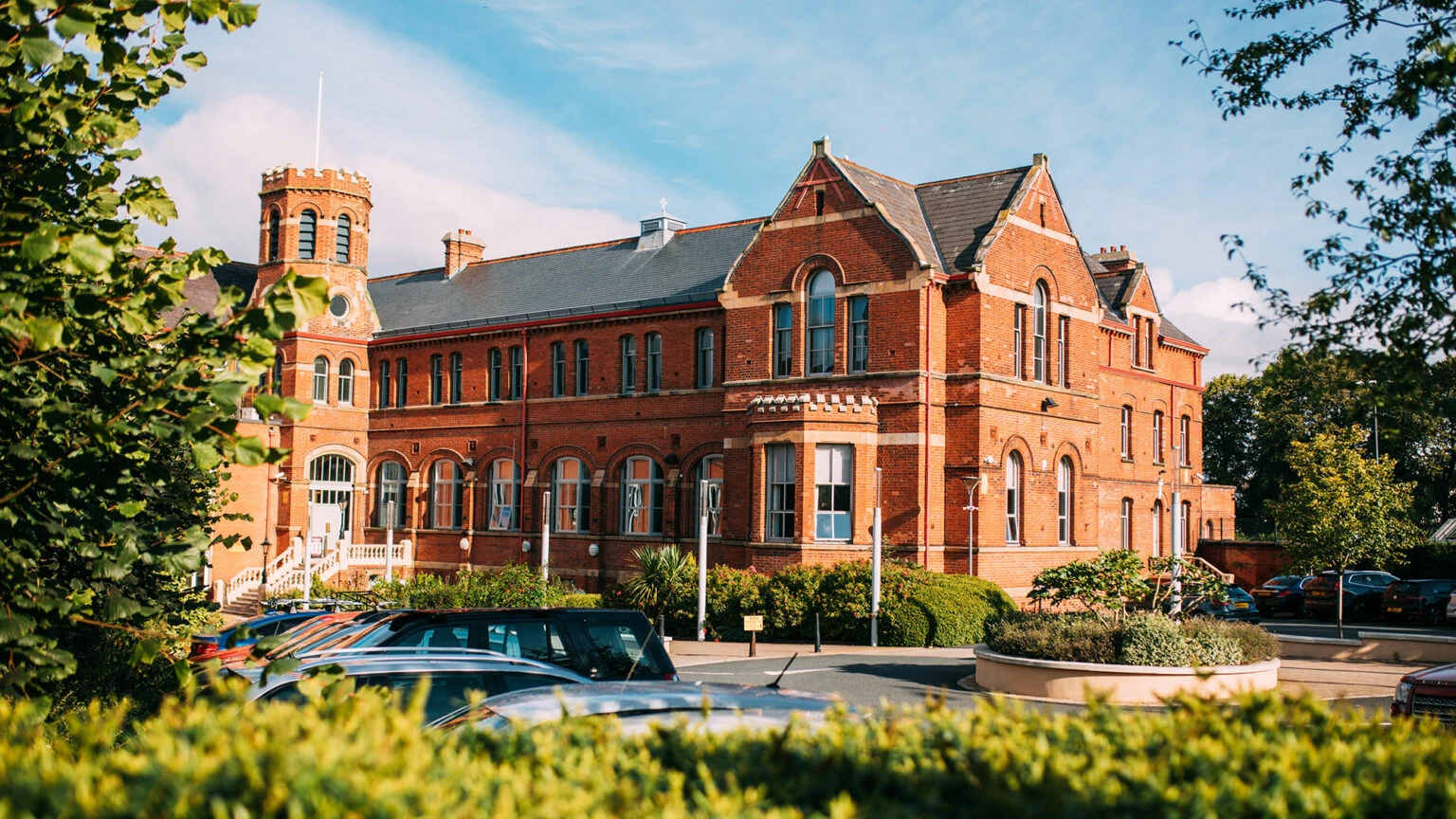
Principal Peter Finn told CNA: “At Christmastime, St. Mary’s University College in Belfast celebrates an institutional identity which reflects a Christian, explicitly faith-inspired worldview.”
“We are the only Catholic higher education institution in Northern Ireland, with an identity which is not defined by what proportion of our students are Catholic or any other denomination or none. Our identity has the core characteristics of faith and service as well as a commitment to the values of the Gospel.”
When St. Mary’s opened in 1900, Bishop Henry Henry, bishop of Down and Connor, welcomed “many intelligent, earnest young ladies from different parts of the country.” He assured them: “The good Dominican nuns placed over you will see that you will be proficient in religious knowledge, theoretical and practical.”
Finn said: “In our 125th anniversary year, we celebrate the pioneering work of our founders, Bishop Henry of Down and Connor and the Dominican sisters. We also celebrate what St. Mary’s has become today — a small, specialist, and distinctive institution of higher education in the model of a liberal arts college, which performs very highly. Key to our performance is a partnership of collaborative provision with Queen’s University, Belfast.”
The college campus is situated on the Lower Falls Road in West Belfast, a location that placed it at the very front line during the conflict in Northern Ireland. Over the decades, St. Mary’s has thrived in West Belfast, weathering global and local challenges with unwavering resolve.
Students who boarded there during World War II recalled adapting to the harsh realities of life behind heavy blackout curtains and under curfew, as fears of Nazi bombing raids loomed over Belfast. Even amid the turbulence of the Troubles, the college continued its mission, undeterred by social unrest in the surrounding streets.
St. Mary’s is embedded in the West Belfast community, which is rich in history and culture. The college attracts applicants from across Northern Ireland and beyond, now complemented by a growing international student community.
Finn explained: “There is a special place at St. Mary’s for both community and international engagement. Each year we host events and activities with over 100 community groups, and at the other level we maintain membership of the Association of Catholic Colleges and Universities and the European Federation of Catholic Universities, as well as facilitating international student mobility.”
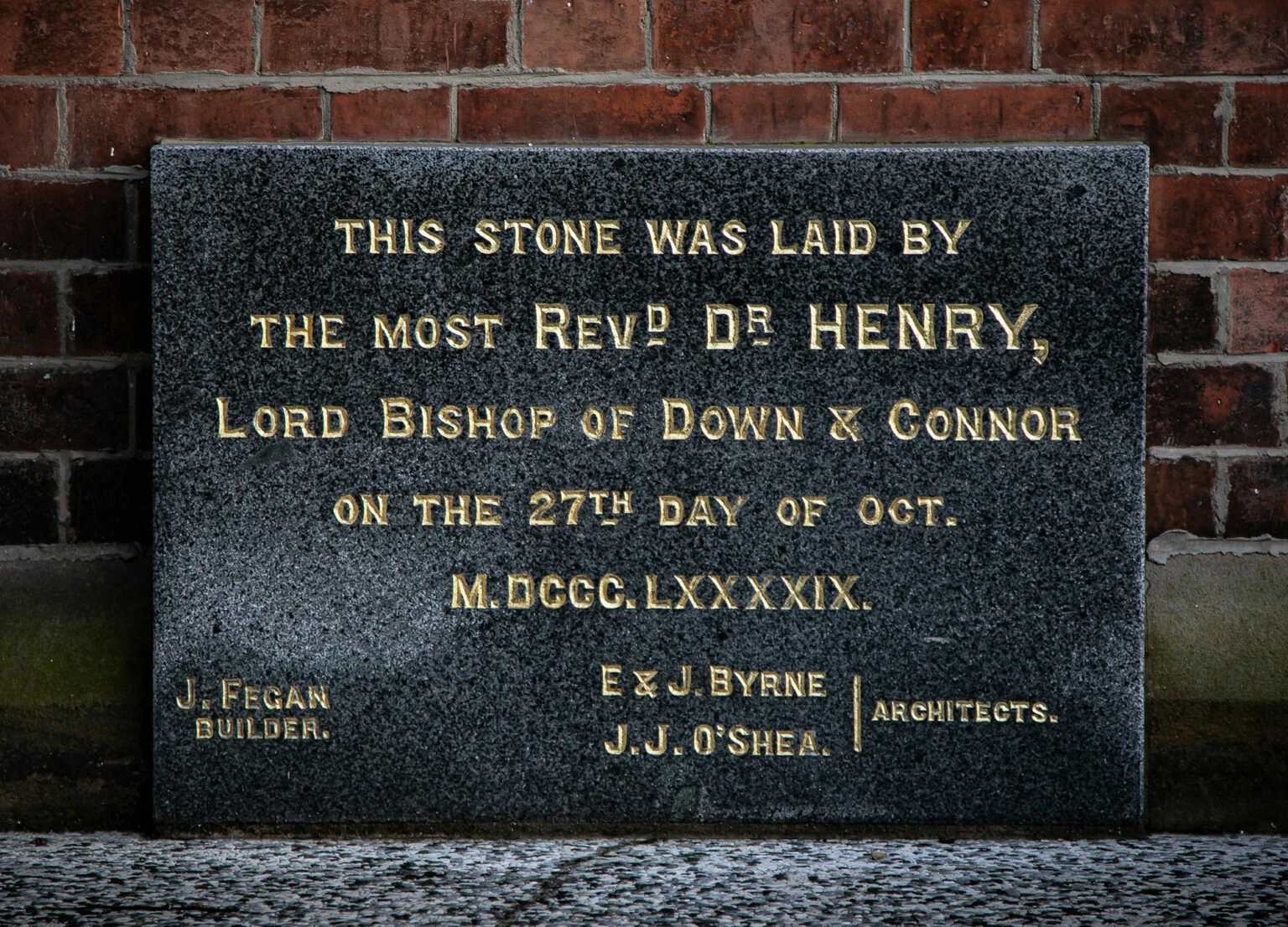
Finn pointed to St. Mary’s widened international links. “For example, we have established an international summer school in partnership with Féile an Phobail, which is a major community festival held annually in West Belfast during the month of August.”
“We have been delighted to welcome students from partner universities in the United States who travel here to learn about conflict resolution and the Northern Ireland peace process.”
It is for its role in training generations of educators that St. Mary’s is most famous. Since the 1980s, when the former St. Joseph’s teacher training college merged with St. Mary’s, it has educated male and female trainee teachers together. Distinguished alumni include Nobel laureate Seamus Heaney and playwright Brian Friel, author of “Dancing at Lughnasa.”
The college’s governing body is chaired by Bishop Alan McGuckian, bishop of Down and Connor and episcopal successor to founder Henry. Priests have traditionally formed part of the teaching faculty contributing to the certificate in religious education, which is an award of St. Mary’s University College, validated by the Church authority, and a requirement for Catholic primary school teachers in Northern Ireland.
Teachers educated at the college find their way to schools not only in Northern Ireland but also across the globe. The college is supplemented by a liberal arts program empowering students as they contemplate their future pathways. It also has a key role in training teachers for schools where pupils are taught through the medium of the Irish language.
One alumnus making his mark is New Orleans Saints kicker Charlie Smyth. In 2024, Smyth completed his master’s in education degree at St. Mary’s University College in Belfast, having previously graduated from the college as a primary school teacher qualified to teach through the Irish language.
As the 125th milestone is celebrated, the legacy of Henry and the founding Dominican sisters ensures St. Mary’s University College continues and endures in the achievement of its teachers in educating successive generations of Catholic children.
Vatican expert: Co-Redemptrix title of Mary not absolutely prohibited
Posted on 12/28/2025 13:00 PM (CNA Daily News - Europe)
 Monsignor Maurizio Gronchi. Credit: EWTN Noticias
Monsignor Maurizio Gronchi. Credit: EWTN Noticias
Dec 28, 2025 / 08:00 am (CNA).
Monsignor Maurizio Gronchi, an expert consultant for the Dicastery for the Doctrine of the Faith at the Vatican, clarified that the measure established last month regarding the use of the titles “Co-Redemptrix” and “Mediatrix” for the Virgin Mary is “not an absolute prohibition” and that these titles can still be used in popular piety, provided their meaning is understood.
“It’s not an absolute prohibition, but it will no longer be used in official documents or in the liturgy. But if used in popular devotion, understanding its meaning, no one will be reprimanded for it,” the expert said in an interview with “EWTN Noticias,” the Spanish-language broadcast edition of EWTN News.
The interview took place after the Nov. 4 publication of the doctrinal note “ Mother of the Faithful People” in which the Dicastery for the Doctrine of the Faith, led by Cardinal Víctor Fernández, stated that the use of the title “Co-Redemptrix” is “always inappropriate” and encourages “special prudence” regarding the title “Mediatrix of All Graces.” The text has sparked controversy among the faithful, especially among those who use these terms within the Catholic Church.
Gronchi explained that “the issue is an old one. This problem has been discussed for 99 years, since 1926. We have studied it on several occasions, and the dicastery has received numerous requests for clarification regarding these terms. These titles present a problem. There is a risk of obscuring, of not clearly explaining that the centrality of the paschal mystery of salvation lies in Jesus Christ.”
“For this reason,” the expert indicated, “now is the time to clarify these titles, so that when it is said that they have been used in the past, it will mean that it was done inappropriately. It doesn’t mean that it was wrong, but rather that a definition of these titles was not yet mature and clear.”
The consultant emphasized that the pontifical document is a doctrinal note that “deepens, clarifies, and states that these terms are not appropriate, they are not opportune, simply because Mary participates in the redemption, she collaborates in the redemption, but not in the same way as Jesus.”
After noting that the Virgin Mary is like the moon reflecting the light of the sun, a symbol of Jesus, Gronchi said that “Mary gives birth to Jesus, but on the cross, Jesus dies, not Mary. Mary participates with her heart, with her affection, with all that she is, but it is a participation that the document calls dispositive, meaning that Mary disposes us to receive the grace of Christ, but she is not the source of grace, nor the mediatrix of all graces.”
What does he say to those who are confused?
When asked what he would say to those who are confused by the new Vatican document, the expert stated that “they shouldn’t feel any confusion. They should pray to Mary and they should pray to her with the holy rosary. The rosary contains the mysteries of the life of Jesus; therefore, one prays to Mary by meditating on the mysteries of the life of Jesus.”
“This is the simplest, most popular devotion, the one that leads to heaven. The saints have already said it, and we pray to Mary with serenity. If we wish, we can also use the Litany of Loreto, which has very beautiful titles; there is no need to add anything else,” Gronchi emphasized.
“What we must say about Mary,” he concluded, “is that she is the mother of the Lord, the mother of God, the mother of the Church, the mother of the faithful people who accompany us and guide us with tenderness and great love.”
This story was first published by ACI Prensa, CNA’s Spanish-language news partner. It has been translated and adapted by CNA.